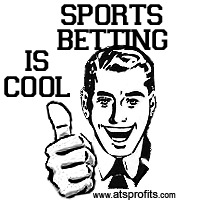I recently read the paper “Herd behaviour and underdogs in the NFL” by Sean Wever and David Aadland. It describes the phenomenon whereby bettors overvalue favorites in the NFL. They speculate briefly that this is due to the media and analysts over-hyping certain popular teams and under-estimating the parity that exists in the NFL. They create a model that suggests that betting on certain longshot underdogs will result in a positive expected betting profit. Because you typically wager $110 to win $100 when betting against the spread, you have to win more than 52.38% of the time to make money.
They fit their model on data from 1985-1999, and the model recommended betting on home underdogs when the spread was +6.5 or more and away underdogs when the spread was -10.5 or less. If they had used this betting strategy from 2000-2010, they would have made 427 bets, of which 246 would have won. That’s a winning percentage of 57.61%. If they bet $110 on each of those 427 games, they would have made $4690 over the 10 years, thus returning about $11 profit on each $110 bet. That’s a 10% return on investment, if I’m not mistaken. Pretty impressive.
